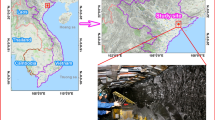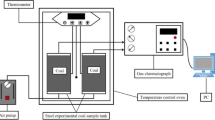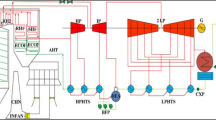Abstract
The harmful gases produced from coal spontaneous combustion (CSC) can cause the environmental pollution. Being able to predict the experimental minimum period of CSC (EMPCSC) is essential in controlling CSC and effectively reducing harmful gas emissions. To obtain high prediction accuracy, we used three optimization algorithms, namely the genetic algorithm (GA), ant colony algorithm (ACO), and particle swarm optimization algorithm (PSO), to optimize the backpropagation neural network (BPNN). R2, MSE, RMSE, and MAPE were used as evaluation indexes to determine the most accurate prediction model for EMPCSC. Data of 424 coal samples from 15 regions in China were analyzed, with 207 and 217 samples having a spontaneous combustion period of less than 40 days (W) and more than 40 days (V), respectively. The two groups were further distributed between low-temperature slow oxidation (W0 and V0) and low-temperature fast oxidation (W1 and V1). The results indicated that the prediction performance of the BPNN model optimized using PSO (PSO–BPNN) was better than that of the GA–BPNN and ACO–BPNN models. After optimization through PSO, the goodness of fit (R2) of groups W0, W1, V0, and V1 increased from 0.9180, 0.8746, 0.9987, and 0.9782 to 0.9857, 0.9639, 0.9997, and 0.9994, respectively. Therefore, the results can provide a theoretical reference for selecting the optimal neural network model to predict EMPCSC with high accuracy.














Similar content being viewed by others
Data availability
The datasets used and analyzed during this article are available from the corresponding author on reasonable request.
References
Cai B, Pan GL, Fu F (2020) Prediction of the Postfire Flexural Capacity of RC Beam Using GA–BPNN Machine Learning. J Perform Constr Fac 34(6):04020105
Chen G, Ma XQ, Lin MS, Peng XW, Yu ZS (2016) Pollutant emission characteristics and interaction during low–temperature oxidation of blended coal. J Energy Inst 89(1):40–47
Chen XX, Bi RQ, Huang JJ, Shan WX, Xiao J (2020) Wang DY (2020) Experimental study on early prediction index gas for spontaneous combustion. Energy Source Part A. https://doi.org/10.1080/155670361746443
Deng J, Li QW, Xiao Y, Shu CM (2017) Experimental study on the thermal properties of coal during pyrolysis, oxidation, and re-oxidation. Appl Therm Eng 110:1137–1152
Deng J, Xiao Y, Li QW, Lu JH, Wen H (2015) Experimental studies of spontaneous combustion and anaerobic cooling of coal. Fuel 157:261–269
Gao YL, Lin SY, Hu WH, Yi SP (2020) Improved calculation model for the shortest spontaneous combustion period. ACS Omega 5(37):23559–23567
He Q, Lu W, Li JL, Xu J (2020) Study on Thermokinetic Parameters of Coal–oxygen Reaction Path with Constant Temperature Difference Guiding Method. Combust Sci Technol. https://doi.org/10.1080/00102202.2020.1858291
Li A, Chen CK, Chen J, Lei P, Zhang YL (2021) Experimental investigation of temperature distribution and spontaneous combustion tendency of coal gangue stockpiles in storage. Environ Sci Pollut R. https://doi.org/10.1007/s11356-021-12964-0
Li L, Jiang DY, Beamish BB (2010) Calculation of ignition times under adiabatic conditions by activation energy. J China Coal Soc 35(5):802–805 ((in Chinese))
Lu X, Deng J, Xiao Y, Zhai XW, Wang CP, Yi X (2022) Recent progress and perspective on thermal-kinetic, heat and mass transportation of coal spontaneous combustion hazard. Fuel 308:121234
Liu P, Liu ZH, Hu YM, Shi Z, Pan YC, Wang L, Wang GX (2019) Integrating a hybrid back propagation neural network and particle swarm optimization for estimating soil heavy metal contents using hyperspectral data. Sustainability-Basel 11(2):419
Lu WD, Wang JR, Shan YF, Hong LF, Wang XF (2006) Forecasting technique for spontaneous combustion stage on basis of L-MBP neural network. J Liaoning Technical University 25(6):815–818 ((in Chinese))
Onifade M, Genc B, Carpede A (2018) A new apparatus to establish the spontaneous combustion propensity of coals and coal–shales. Int J Min Sci Technol 28(4):649–655
Ören Ö, Şensöğüt C (2018) Determination of safe storage types for coals with regard to their susceptibility to spontaneous combustion–Tuncbilek coal case. Int J Coal Prep Util 38(6):290–301
Pan RK, Ma JW, Zheng LG, Wang J (2020) Experimental study on the effects of chemical composite additive on the microscopic characteristics of spontaneous combustion coal. Environ Sci Pollut R 27(5):5606–5619
Qu LN (2018) A study on the prediction method of coal spontaneous combustion development period based on critical temperature. Environ Sci Pollut R 25(35):35748–35760
Ren SJ, Wang CP, Xiao Y, Deng J, Tian Y, Song JJ, Chen XJ, Sun GF (2020) Thermal properties of coal during low temperature oxidation using a grey correlation method. Fuel 260:116287
Rúa MOB, Baena PB, Aragón AJD (2018) Optimization of techniques for the extinction and prevention of coal fires produced in final walls as a result of spontaneous combustion in the Cerrejón mine—Colombia. Environ Sci Pollut R 25(32):32515–32523
Wang H (2011) Principal component neural network prediction model for coal self–ignition duration. Comput Eng Appl 47(26):242–245 ((in Chinese))
Wang YM, Shi GQ, Guo ZX (2017) Heat transfer and thermodynamic processes in coal–bearing strata under the spontaneous combustion condition. Numer Heat Tr A-Appl 71(1):1–16
Wang K, Fan HH, Gao P, He YZ, Shu P (2020) Spontaneous Combustion Characteristics of Wetting Coal under Different Prepyrolysis Temperatures. ACS Omega 5(51):33347–33356
Wen H, Wang H, Liu WY, Cheng XJ (2020) Comparative study of experimental testing methods for characterization parameters of coal spontaneous combustion. Fuel 275:117880
Xiao Y, Liu JW, Zeng JF, Lu X, Tian Y, Shu CM (2022) Coupling effect of operational factors on heat extraction from a coal pile using a two-phase closed thermosyphon. Energy 239:122371
Yang FQ, Qiu DY (2019) Exploring coal spontaneous combustion by bibliometric analysis. Process Saf Environ Prot 132:1–10
Yang YL, Li ZH, Si LL, Hou SS, Li ZW, Li JH (2018) Study on test method of heat release intensity and thermophysical parameters of loose coal. Fuel 229:34–43
Yu MG, Huang ZC, Yue CP (2001) Mathematical model for calculating the shortest coal spontaneous combustion time. J China Coal Soc 5:516–519 ((in Chinese))
Zhang JQ (2011) Study on the gas content of coal seam based on the BP neural network. Procedia Eng 26:1554–1562
Zhang LW, Sun Z, Zhang C, Dong FH, Wei P (2018) Numerical investigation of the dynamic responses of long–span bridges with consideration of the random traffic flow based on the intelligent ACO–BPNN model. IEEE Access 6:28520–28529
Zhang XH, Xi G (2006) New experimental technique to determine coal self-ignition duration. J xi’an Jiaotong University 09:1058–1061 ((in Chinese))
Zhong KQ, Xiao Y, Zhao X, Yin L, Shu CM, Tian Y (2021) Predictive ability of four statistical models for determining the influence of coal thermophysical properties during the initial phase of coal spontaneous combustion. Fuel 292:120348
Funding
This work was supported by the National Natural Science Foundation of China (No. 51974233).
Author information
Authors and Affiliations
Contributions
Contributions of all authors to this work were as follows:
Yang Xiao was involved in writing—reviewing and editing, funding acquisition, project administration.
Yong Cao helped in conceptualization and writing—original draft and editing.
Kai-Qi Zhong contributed to data collecting, literature reviewing and editing.
Lan Yin was involved in algorithm establishing and editing.
Jun Deng helped in literature reviewing and editing.
Corresponding author
Ethics declarations
Ethics approval and consent to participate
Not applicable to this manuscript.
Consent for publication
Not applicable to this manuscript.
Competing interests
The authors declare no competing interests.
Additional information
Responsible Editor: Philippe Garrigues.
Publisher's Note
Springer Nature remains neutral with regard to jurisdictional claims in published maps and institutional affiliations.
Rights and permissions
About this article
Cite this article
Xiao, Y., Cao, Y., Zhong, KQ. et al. Optimized neural network to predict the experimental minimum period of coal spontaneous combustion. Environ Sci Pollut Res 29, 28070–28082 (2022). https://doi.org/10.1007/s11356-021-18387-1
Received:
Accepted:
Published:
Issue Date:
DOI: https://doi.org/10.1007/s11356-021-18387-1




